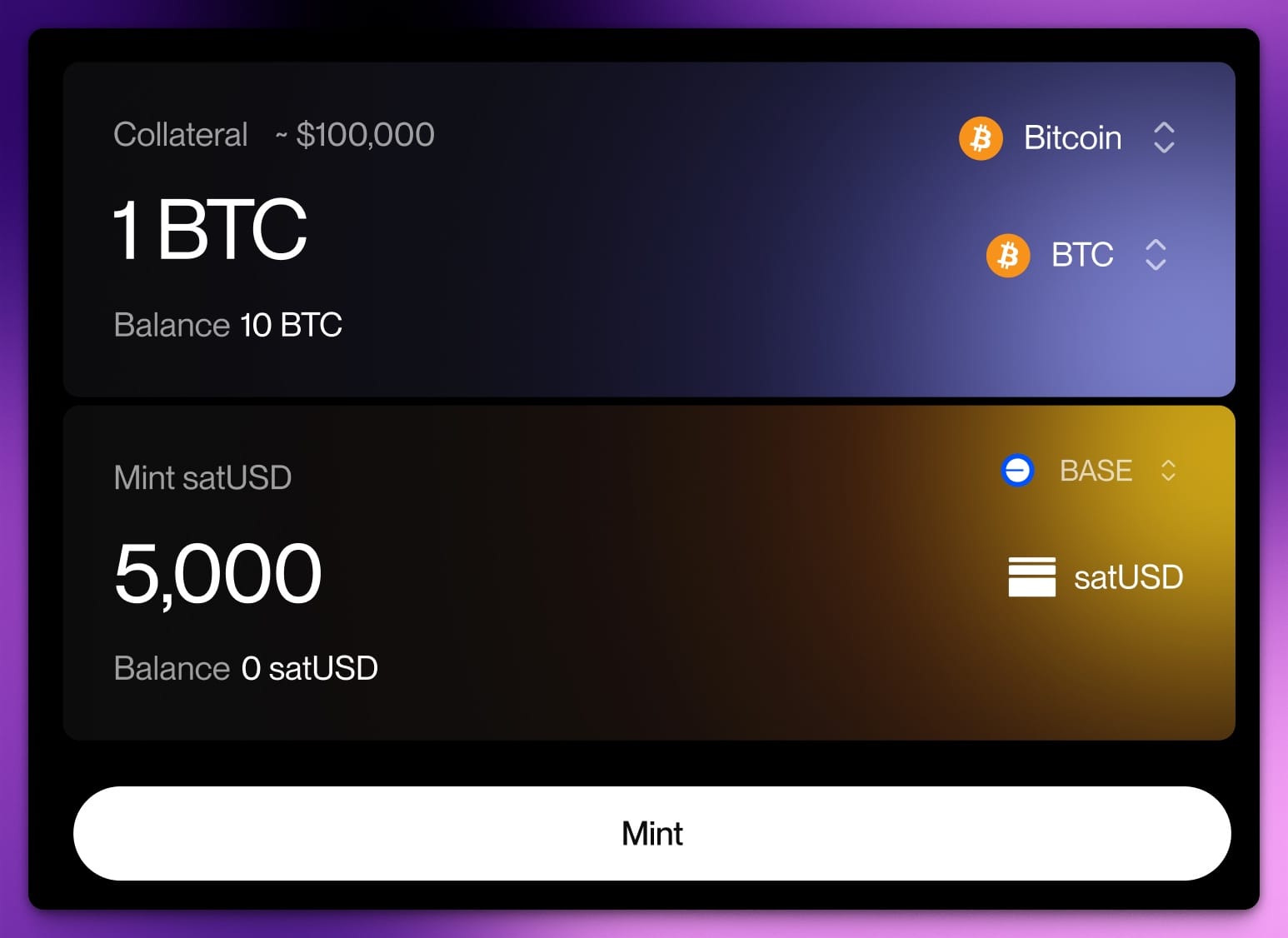Satoshi Protocol proudly announces Satoshi Protocol V2, a revolutionary upgrade transforming satUSD into a universal Bitcoin-backed stablecoin.
With the first Omni-CDP Protocol integrated with LayerZero, unlock your BTC’s potential across EVM, Solana and Bitcoin Layer2 Ecosystem.
Satoshi V2 is LIVE!
— Satoshi Protocol (@Satoshi_BTCFi) February 11, 2025
We're excited to launch Satoshi V2 – the first Omni-CDP Protocol integrated with @LayerZero_Core, connecting Bitcoin liquidity across EVM, Solana, and Bitcoin Layer2.
Deposit, mint and access liquidity now at https://t.co/UjFddrkHNy pic.twitter.com/NWVeWm97p3
What’s New in Satoshi Protocol V2?
Omni-CDP: Collateralize BTC, Mint satUSD Anywhere.
The Omni-CDP (Collateralized Debt Position) integration enables users to collateralize their BTC and BTC LST assets and allows them to mint satUSD on any integrated chains.

satUSD Bridge: Cross-Chain Transfers in Seconds.
Powered by LayerZero’s OFT standard, move satUSD between chains natively—no wrapped assets, no delays, low fees, & unified liquidity.

What is LayerZero
LayerZero is an omnichain interoperability protocol that enables seamless communication between different blockchains. It allows developers to build omnichain applications (OApps) that can interact across multiple chains as if they were on a single chain.
Integration details
satUSD implements OFT standard as a universal stablecoin with unified liquidity, enabling circulation across multiple EVM ecosystems and includes Solana.
satUSD adopts the OFT (Omnichain Fungible Token) standard built on LayerZero technology, enabling circulation across EVM networks and Solana without extra cross-chain liquidity
OFT standard works by debiting (burn / lock) tokens on the source chain, sending a message via LayerZero, and delivering a function call to credit (mint / unlock) the same number of tokens on the destination chain. Ensuring satUSD total supply remains consistent on all networks.

Satoshi OApp (DApp deployed on LayerZero) handles messages through _lzSend and _lzReceive1
_lzSend and _lzReceive1 is a cross-chain messaging function managed by the LayerZero, and Satoshi OApps on LayerZero use_lzSend and _lzReceive to send and receive omnichain messages, enabling the Satoshi OApp to create positions, mint satUSD, and execute liquidations while maintaining consistent collateral ratios across chains.

How It Works: LayerZero & OFT Simplified
By integrating LayerZero, Satoshi Protocol built the first Omni-CDP protocol, allowing users to deposit collateral on Chain A (Source chain) and minting satUSD on Chain B (Destination chain) above collateral ratio 110%, circulating across EVM networks and Solana Ecosystem.
LayerZero
Acts as a universal “translator” between blockchains, enabling secure, low-level communication.
OFT Standard
Lets satUSD move natively across chains (like email across providers), eliminating wrapped token risks.
Why Satoshi Protocol V2 Changes the Game
- Solve Fragmented Liquidity: Access a unified pool of satUSD across chains, no more isolated networks.
- Maximize BTC Utility: Earn yield or hedge positions without liquidating Bitcoin.
- Future-Proof Design: Built for a multi-chain world with LayerZero’s battle-tested infrastructure.
How to Use Satoshi Protocol V2
When Satoshi Protocol V2 goes live mid-Feb, simply head to the Satoshi Protocol App Mint Page, select your collateral & network, and mint satUSD seamlessly.
Check out our tutorial for a step-by-step guide
- Go to Satoshi Protocol App V2 & head to the Mint Page
- Select collateral & network
- Input collateral & satUSD amount
- Select satUSD destination network
- Mint satUSD
How to Use Satoshi Protocol V2
About Satoshi protocol
Satoshi Protocol is the first Bitcoin Finance Network powered by satUSD, a Bitcoin-backed stablecoin. Mint satUSD with BTC as collateral across the Bitcoin Mainnet and L1s/L2s.
Get started with Satoshi Protocol, follow us!
Website | Web APP | Twitter | Telegram | Discord | Docs | Blog





